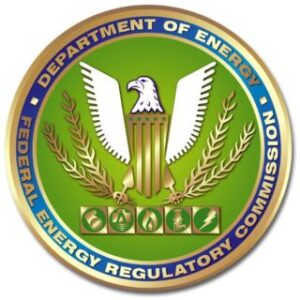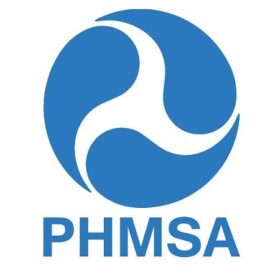
A. Implementation of the NGC+ White Papers
Nationwide standards for hydrocarbon drop out and interchangeability are a laudable goal. The challenge in articulating and implementing a policy to achieve this goal is that there is variability in the composition of the supply of gas, variability in pipeline and distributor operations, and variability in end-use requirements and a number of identified unknowns that can be solved only through additional research and equipment testing.
A policy statement is the appropriate procedural vehicle for the Commission to give advance notice of how it will deal with hydrocarbon drop out (also referred to as hydrocarbon dew point, or “HDP”)2 and interchangeability issues as they arise in the future. Given the substantial increase in projected Liquefied Natural Gas (LNG) imports, and the potential reoccurrence of the hydrocarbon drop out problems that surfaced in winter 2000-2001, a policy statement will facilitate long-range planning by all segments of the natural gas industry and by affected stakeholders outside the industry. At this time, however, there is neither a need nor an adequate foundation for generic Commission regulations that require all pipelines to file or amend tariff specifications for liquid hydrocarbon drop out or interchangeability. Neither hydrocarbon drop out nor interchangeability are presently an industry-wide problem. And, as the Interchangeability White Papers make clear, and as Chairman Wood acknowledged in his recent letter to Energy Secretary Bodman,3 further research is necessary if any national standards are to be adopted with respect to natural gas interchangeability.
Accordingly, INGAA recommends that the Commission issue a policy statement that sets out how the Commission intends to approach the HDP and interchangeability issues that come before it. In several proceedings involving HDP issues, the Commission has already made decisions on certain issues that may properly be incorporated into such a policy statement. These include:
• Pipelines may adopt permanent safe harbor tariff HDP provisions, which guarantee acceptance of compliant gas, along with mechanisms for posting more tolerant specifications that vary over time and receipt point, depending on conditions. See Natural Gas Pipeline Co. of America, 104 FERC ¶ 61,322 at PP. 24 and 39 (1993)(“Natural”).
• In establishing maximum HDP limits, a pipeline has the right to require that the gas that it receives into its system will allow it to meet quality specifications of downstream pipelines. Id. at PP. 48-53.
• Pipeline enforcement of a quality standard against shippers that inject rich, non-conforming gas is not unduly discriminatory when it is necessary to prevent hydrocarbon drop out or to sustain the pipeline’s ability to deliver gas off-system. Id. at P. 51.
• Shippers that wish to inject “out of spec” gas into any point or pool of receipt or along any given line segment of a pipeline’s system should be required to pay the processing costs needed to bring the gas into conformity. Id. at P. 56.
• The complaint process is the method the Commission uses in finding and rectifying discriminatory actions once it accepts appropriate tariff provisions. Id. at P. 61.
In addition, INGAA urges the Commission to announce in a policy statement that it intends to adhere to the following principles (more fully described at pp. 12-21 below)4 in addressing HDP and interchangeability issues as they arise:
• Following a review by all pipelines of their operations and tariffs, those that are facing HDP or interchangeability problems, and have not adequately addressed the
4 In the interest of brevity at this point, some of the principles set out below have been collapsed into the following nine points, issues in their tariffs, should make limited NGA § 4 tariff filings to address the problems in accordance with precedent and the following principles:
• Upstream suppliers (producers, processors, gatherers) must take responsibility in the first instance for delivering “pipeline quality” gas into the system and should not inject gases that can cause operational harm to the pipeline.
• Pipelines currently facing hydrocarbon drop out concerns or interchangeability issues should file tariff specifications that govern receipt of gas into their system.
A CHDP of 15° F is presumptively valid as a hydrocarbon drop out “safe harbor,” although a pipeline may establish a different safe harbor if the + 15° CHPD5 is not adequate to protect its system, or clearly exceeds what is necessary.
If a pipeline must address interchangeability specifications in its tariff, it should work with shippers, suppliers and customers to determine the appropriate interchangeability limits for its system using the NGC+ Interchangeability White Paper recommendations as the guide.
• Tariff specifications should apply to pipeline receipt points rather than delivery points, utilize safe harbor concepts to improve inter-pipeline transportation, and there should be a transition period for shippers to adapt to changed specifications.
• Broad merchantability clauses should not be allowed to impose broad warranty and indemnification obligations on the pipelines for third-party gas quality.
• Pipelines retain authority to issue operational flow orders (“OFOs”) to ensure operational integrity.
• De Minimis exceptions must be made pipeline-by-pipeline, based on operational conditions.
• The Commission supports the Interchangeability NGC+ Working Group’s recommendation for further study on, inter alia, the effect of gas supply on end-use equipment.
• The Commission, as part of its outreach program, will encourage state agencies to announce or implement the same policies for intrastate and Hinshaw pipelines.
B. The Commission Should Reject the NGSA Proposal
The Commission should not adopt NGSA’s rulemaking proposal for a number of reasons. First, given that neither hydrocarbon drop out nor interchangeability is an industry-wide problem, and given the consensus on the need for further research with respect to interchangeability, rulemaking procedures are not suited to the problems. Pipelines that are experiencing problems need the flexibility to work with their customers and shippers within the White Paper guidelines, outside the context of rigid regulations. A policy statement in which the Commission announces non-binding principles as to how it is likely to view solutions that pipelines and their customers reach, with the guidance and application of the White Papers, is the proper procedural approach here. A rulemaking, by contrast, because it is binding and subject to judicial review, is more likely to polarize positions that lead to unnecessary litigation.
Second, NGSA’s proposal to use downstream delivery points rather than pipeline receipt points as the site for tariff specifications will not work. “Pipeline quality” gas must be established upstream, because, among other reasons, pipelines do not have adequate means to manage gas flows and are not parties to the sales contracts, which should establish the quality of gas the shipper is to deliver to the pipeline receipt point.
Third, NGSA’s proposal is inconsistent with the White Paper consensus recommendations in several important respects. For example, NGSA’s sanction of a 1400 Wobbe maximum standard for interchangeability ignores the White Paper’s critical recommendation to calculate appropriate Wobbe numbers locally, based on historical experience, subject to the 1400 maximum. While a nationwide standard is desirable in the abstract, there currently is an insufficient factual record to prescribe any such figure by rule.
Fourth, NGSA’s proposed rules are unworkable because they place an unreasonably onerous burden on parties that may wish to challenge the default standards for HDP (A(5)-(6)) and interchangeability (B(4)-(5).
Fifth, while NGSA’s proposal to require pipelines to adopt non-discriminatory tariff provisions for aggregation, blending, and pairing may be desirable in the abstract, the practical effect of such a proposal would be to make the pipeline rather than the shippers responsible for creating “pipeline quality” gas. There are a host of reasons why putting such a burden on pipelines is impractical and unfair. One consequence of the unbundling of pipeline merchant operations and the shipper flexibility enhancements following implementation of Order Nos. 436-636 is that pipelines simply have less control over gas flows on their systems. For example, Commission pooling requirements and shippers’ ability to make multiple intra-day nominations make it virtually impossible to track and manage the quality of different gas streams. Moreover, pipelines simply do not have sufficient receipt point chromatographs, gas processing information, or the expertise to administer such a responsibility. See discussion below at 24-25. In short, requiring pipelines to publish detailed “non-discriminatory” tariff provisions spelling out how they will manage the pipeline in unforeseeable, dynamic, future situations is untenable, will produce unnecessary rigidity in the process, and result in more reliance on enforcing specifications through shut-ins, with the undesirable end result of reducing the supply of flowing gas.






